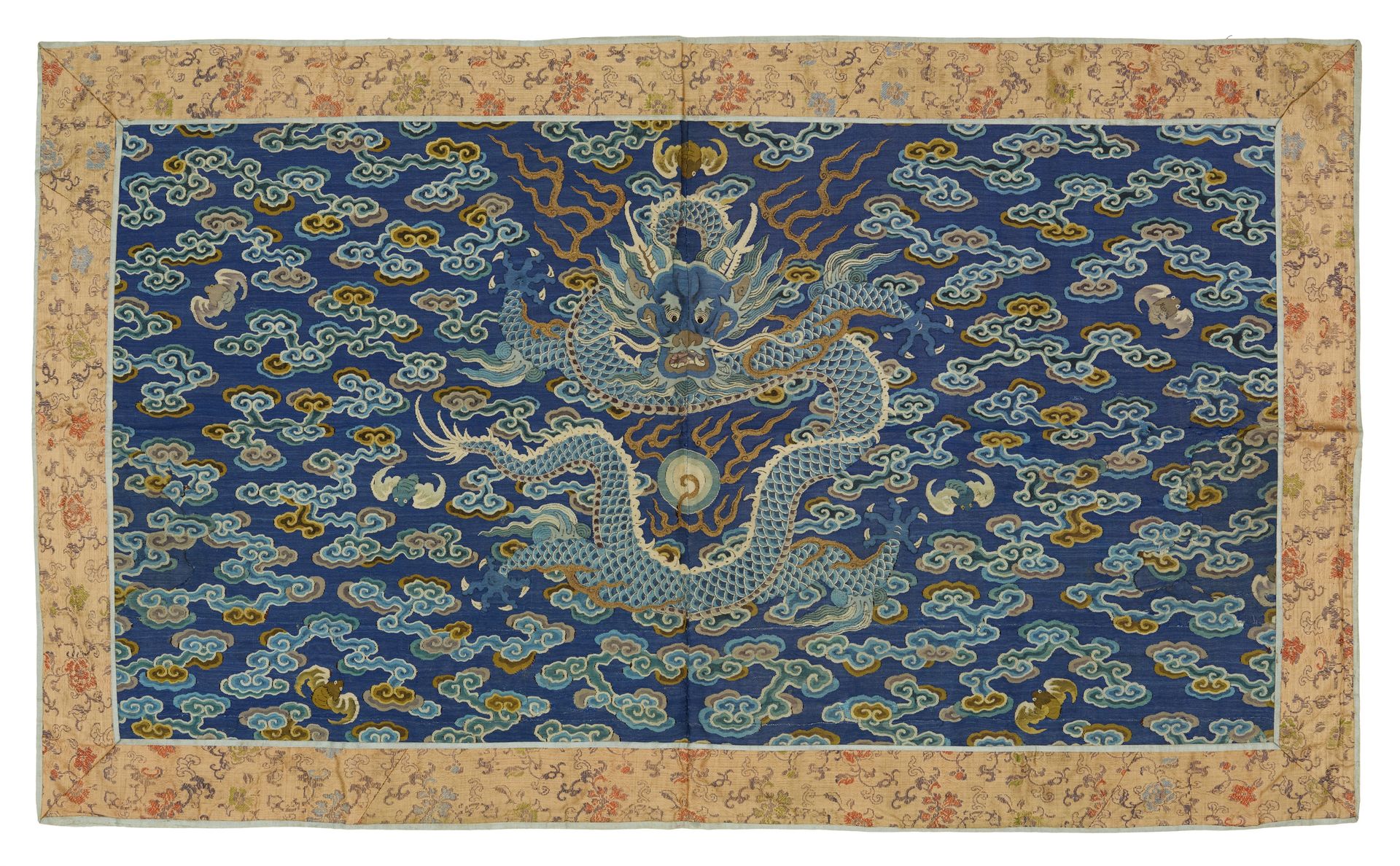Description
Fragment of a dragon robe. Silk fabric in kesi technique. 18th/19th c. Round laid dragon and flaming jewel surrounded by bats and lingzhi clouds on blue background. The flames made of gold lantern, the eyes and the contour lines of the scales embroidered. Woven satin border. Backed with brown cotton. 38,8 x 72,3 cm (without border). Provenance Private collection, Switzerland
146
Fragment of a dragon robe. Silk fabric in kesi technique. 18th/19th c. Round laid dragon and flaming jewel surrounded by bats and lingzhi clouds on blue background. The flames made of gold lantern, the eyes and the contour lines of the scales embroidered. Woven satin border. Backed with brown cotton. 38,8 x 72,3 cm (without border). Provenance Private collection, Switzerland
You may also like
